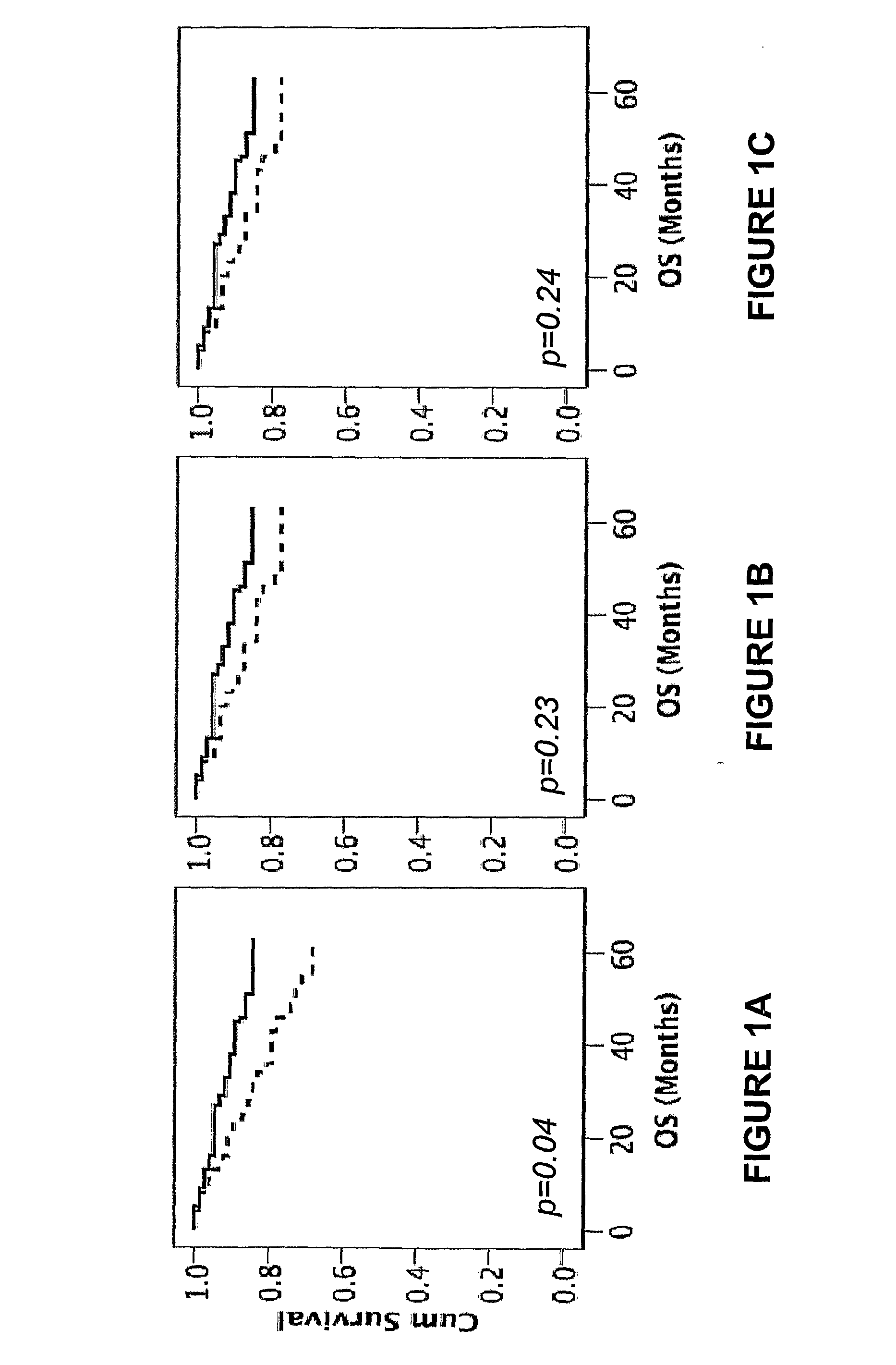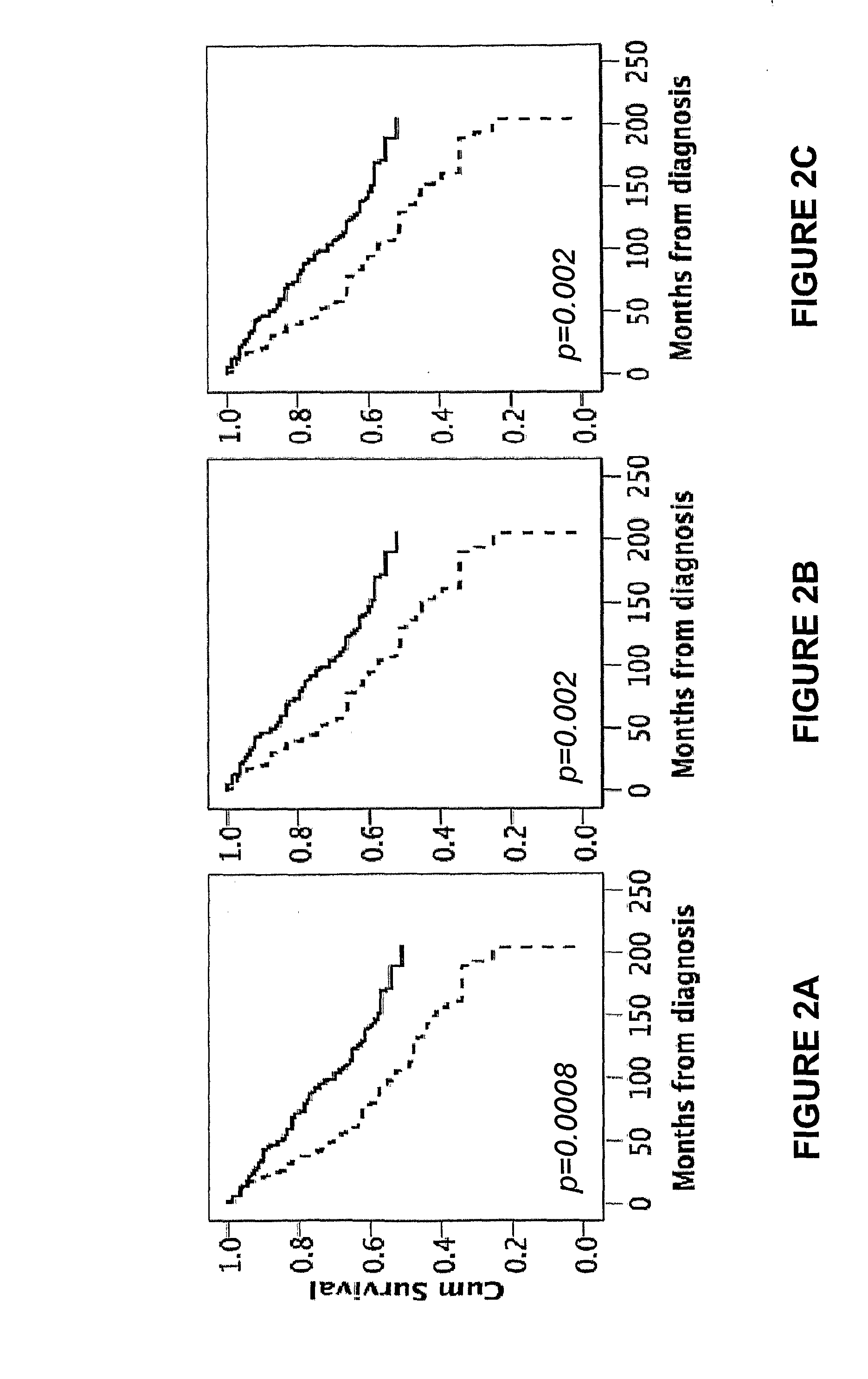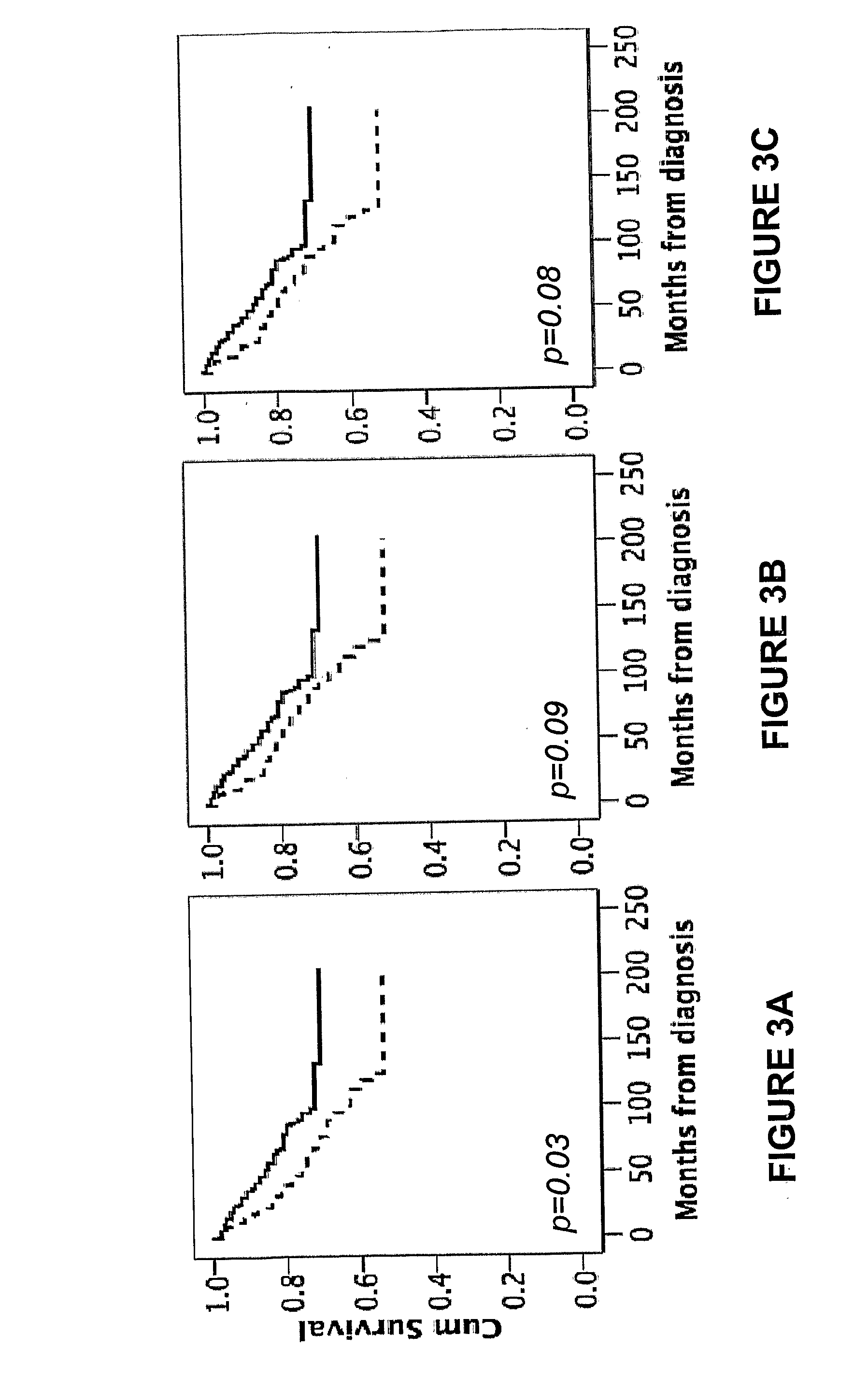Rbm3 as a marker for breast cancer prognosis
a breast cancer and prognosis technology, applied in the field of molecular markers, can solve the problems of not being able to fully define cancer, not being able to evaluate and standardize, and the formation of cancer following precancerous proliferation stages, so as to reduce background staining, enhance the accessibility of antigens, and be easy to use. and efficient
- Summary
- Abstract
- Description
- Claims
- Application Information
AI Technical Summary
Benefits of technology
Problems solved by technology
Method used
Image
Examples
examples
Generation of Mono-Specific Antibodies Against RBM3 and Use thereof to Detect RBM3 in Normal and Cancerous Samples
1. Generation of Antigen
a) Materials and Methods
[0272]A suitable fragment of the target protein encoded by the EnsEMBL Gene ID ENSG00000102317 was selected using bioinformatic tools with the human genome sequence as template (Lindskog M et al (2005) Biotechniques 38:723-727, EnsEMBL, www.ensembl.org). The fragment was used as template for the production of a 134 amino acid long fragment corresponding to amino acids 18-151 (SEQ ID NO:1) of the RBM3 protein (SEQ ID NO:2; EnsEMBL entry no. ENSP00000365946).
[0273]A fragment of the RBM3 gene transcript containing nucleotides 281-682 of EnsEMBL entry number ENST00000376755 (SEQ ID NO:3), was isolated by a Superscript™ One-Step RT-PCR amplification kit with Platinum® Taq (Invitrogen) and a human total RNA pool panel as template (Human Total RNA Panel IV, BD Biosciences Clontech). Flanking restriction sites NotI and AscI were in...
PUM
| Property | Measurement | Unit |
|---|---|---|
| pH | aaaaa | aaaaa |
| molecular weight | aaaaa | aaaaa |
| concentration | aaaaa | aaaaa |
Abstract
Description
Claims
Application Information
 Login to View More
Login to View More - R&D
- Intellectual Property
- Life Sciences
- Materials
- Tech Scout
- Unparalleled Data Quality
- Higher Quality Content
- 60% Fewer Hallucinations
Browse by: Latest US Patents, China's latest patents, Technical Efficacy Thesaurus, Application Domain, Technology Topic, Popular Technical Reports.
© 2025 PatSnap. All rights reserved.Legal|Privacy policy|Modern Slavery Act Transparency Statement|Sitemap|About US| Contact US: help@patsnap.com



